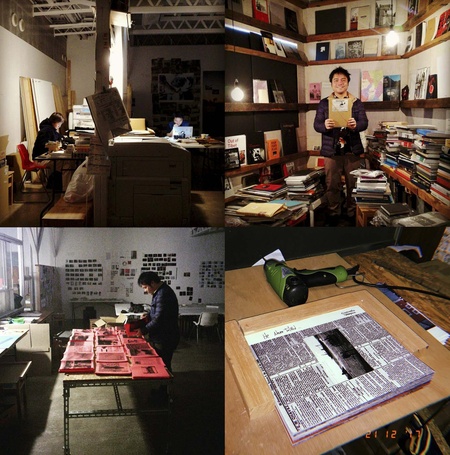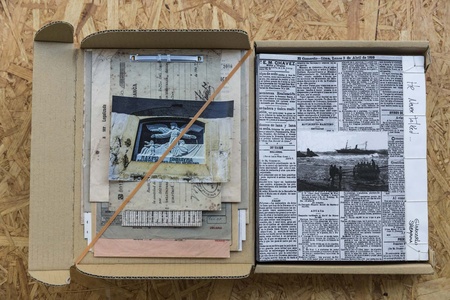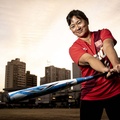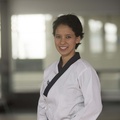
Memory is everywhere, in the drawer of a family piece of furniture, in a portrait and even in the imagination. When Giancarlo Shibayama's grandfather, Sakae, passed away, his relatives performed a very peculiar ritual. They opened the photo albums and tore out the ones in which someone appeared with the ojiisan to take them, leaving a mark that had an effect on Giancarlo, who after years working as a photographer and graphic editor at El Comercio wanted to start a personal project.
He had joined the Supay Fotos photographer collective, but he felt exhausted from taking photos and telling stories of others. But what is a personal project? He decided to be as strict as possible with the term and explored the memory of his family, his absent grandfather and the Japanese migration to tell it through a photobook, a format that he had always liked and that would give him the opportunity to meet great masters. of the genre.
“I was away from the Japanese community for a long time,” says Giancarlo, so it was also a way to rediscover his origins and decipher his identity. He took a trip to Japan and, without knowing the language, visited libraries just to see images of migration. “At home, many times, when I asked about someone who appeared in a photo, no one remembered them. I thought that it is at that moment when a person ceases to exist, it is like dying again and I did not want that to happen to my grandparents.”
A graphic project
For Giancarlo, a book is a more lasting object than a photograph, or one displayed in a gallery, which is why his project would be a photobook. In the marks on the back of the torn photos he saw shapes similar to the islands on the maps. “It was like inventing a territory, a root that came from my own family album.” In addition, he gathered a series of documents where the surname Shibayama was written in another way (Sibayama, Shibayma, Sihayama), a metaphor for the misunderstanding of migration between both cultures.
He investigated when the Japanese were persecuted and deported (part of his family was sent to prisons in the United States and another hid in Ayacucho, in the mountains of Peru). He traveled to Barranca (north of Lima), where his grandfather lived, and imagined him contemplating the sea. He took photos there and the beach there reminded him of Shizuoka, where his family comes from. The concept seemed ready but it was in the workshop of the renowned editor Yumi Goto, in Japan, where she discovered the universe of the photobook on a sheet of paper.
Yumi's workshop is like an experimental laboratory where artists from all over the world come seeking to learn from the renowned artist. After finishing the intensive two-week workshop, Yumi told Giancarlo that his work had potential and invited him to stay as a resident for three months to improve it. I would have a house and food. “I told him I had to think about it. Then someone who worked with Yumi told me that no one had told the sensei that, it was a unique opportunity. So I stayed.”

An intense learning
The photobooks that Yumi publishes are not industrial, they are made exclusively by hand by the author, one by one. Each element that the photobook has is chosen by the creator after a careful selection of the materials and a reason behind each element that makes it up. “We spent three months just working on the concept,” says Giancarlo of the arduous process in which he worked night and day, almost without breaks to rest, and in which he learned to sew in order to assemble the book.
“I made a great friendship with Yumi, I lived in her workshop, I ate and slept there, it was a luxury because artists came from all over the world from whom I learned. In addition, we residents had to present our progress and in those meetings everyone gave their opinion.” Shibayama remembers that to choose the most suitable paper they visited stores where there were hundreds of samples. He himself designed the box in which the photobook comes, perforated and cut each sheet of the 99 books he made.
The photobook had not yet been published when Giancarlo Shibayama received the news that his project had won the New Cosmos of Photography award, organized by Canon, and that it had been chosen by the prominent photographer Alec Soth, whom he admires. That grandfather's fictional diary, recounting the Japanese migration to Peru, was essential to continue the learning in Yumi's workshop until bringing the concept of the photobook to production.
A handmade work
If Giancarlo had difficulty designing the photobook box, Yumi would contact an expert who would teach him the technique. If Giancarlo told him that he should leave the job of cutting the paper to a craftsman because he had ruined some books, another resident told him that he had ruined many more. If Giancarlo chose a font that didn't convince Yumi, she told him to keep looking. No detail could be left undone.
“Most of the pages of the book are printed on white paper, but those that deal with the war are on red paper,” says Giancarlo with his book in his hands. They chose white thread to sew the book so that it would show the passage of time as it gets dirty and they chose Giancarlo's handwriting because it was more rustic. The box was brown, like those used for packaging, and on a lid a metal clasp (a nod to Sakae's tinsmith work) holds a photo of the grandfather, father, and son.
The cover of one of the two books that make up The Shibayamas (the photobook also includes Sakae's identification documents) has the grandfather's fingerprint and a receipt similar to the ones he made for his family business, with the book's code. numbered. The back cover is illustrated with the newspaper that reports on the arrival of the ship in which his grandfather came to Peru. The second book is the one with the marks of the photos torn from the family album and is printed on uncut paper. Below the fold you can see the original photos.
An invaluable experience
Preparing this book has been an adventure for Giancarlo, who received the FoLa (Latin American Photo Library) award for Best Photobook of the Year and has visited various countries to present his work that will be part of the collection of the prestigious MoMA museum in New York, as a finalist. from The Anamorphosis Prize 2017. But the first collection he entered was that of Yumi Goto, who instead of asking him for the first issue of her book, asked him for the last one. “It's the one that looks best,” he told him.

Giancarlo is now Yumi's assistant for her international workshops in Mexico and Spain, teaching technical aspects of that process in which her fingers bled while sewing. Not only did she gain a teacher, but also a friend and the possibility of getting to know a very professional, demanding and passionate world. “There are many things about Japanese culture that I understand now,” says Giancarlo, who during part of the process made decisions thinking he was his grandfather.
In his speech upon receiving the New Cosmos of Photography, Giancarlo Shibayama said: “My grandfather never returned to Japan. But I think he would like that I took him back with this book.” Now he is preparing the next photobook, which will also be dedicated to his family, an invaluable experience that will take him down new paths and memories, real or imagined, of the Japanese migration.

* This article is published thanks to the agreement between the Peruvian Japanese Association (APJ) and the Discover Nikkei Project. Article originally published in Kaikan magazine No. 114, and adapted for Discover Nikkei.
© 2018 Texto y fotos: Asociación Peruano Japonesa










